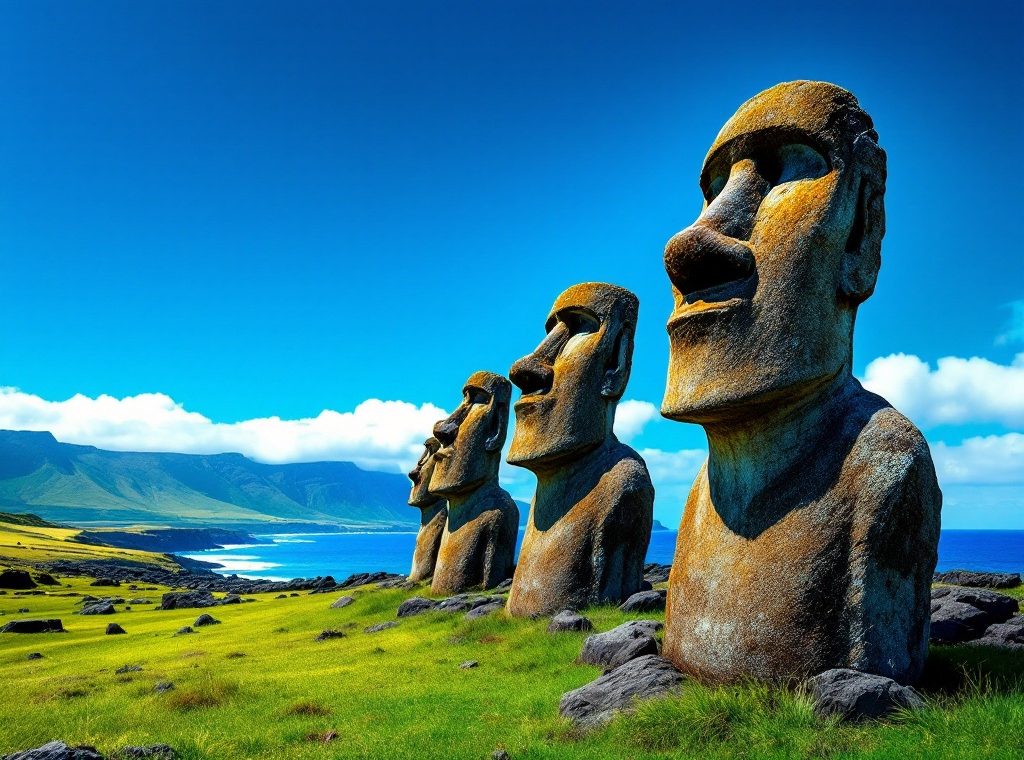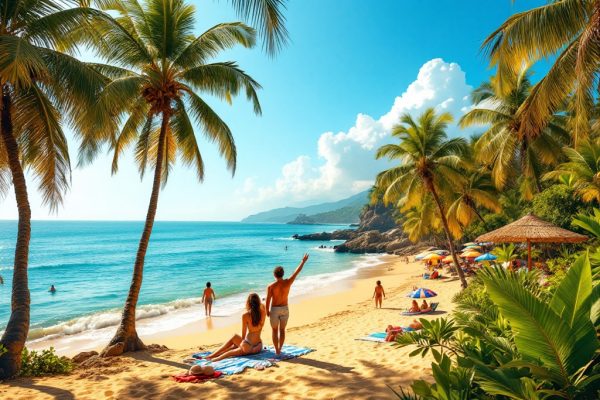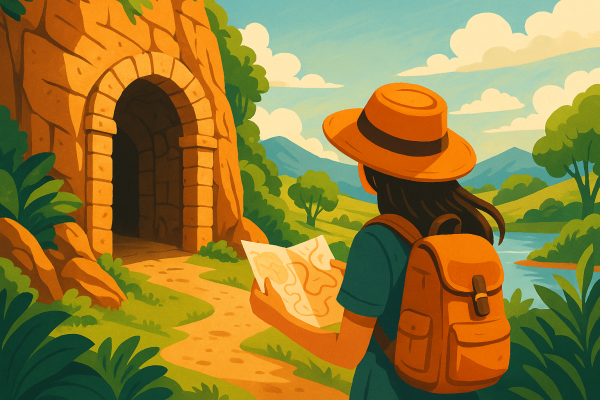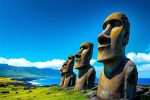Easter Island Travel: How to Get There and What to Expect
Discover the mystique of Easter Island, home to the iconic moai statues. Explore this remote Chilean island in the Pacific, a unique destination steeped in rich culture and history. Learn about flight options from Santiago, essential travel tips, and the must-see archaeological sites like Ahu Tongariki and Rano Raraku. Uncover the secrets of Rapa Nui. Start planning your unforgettable adventure today!
Important information
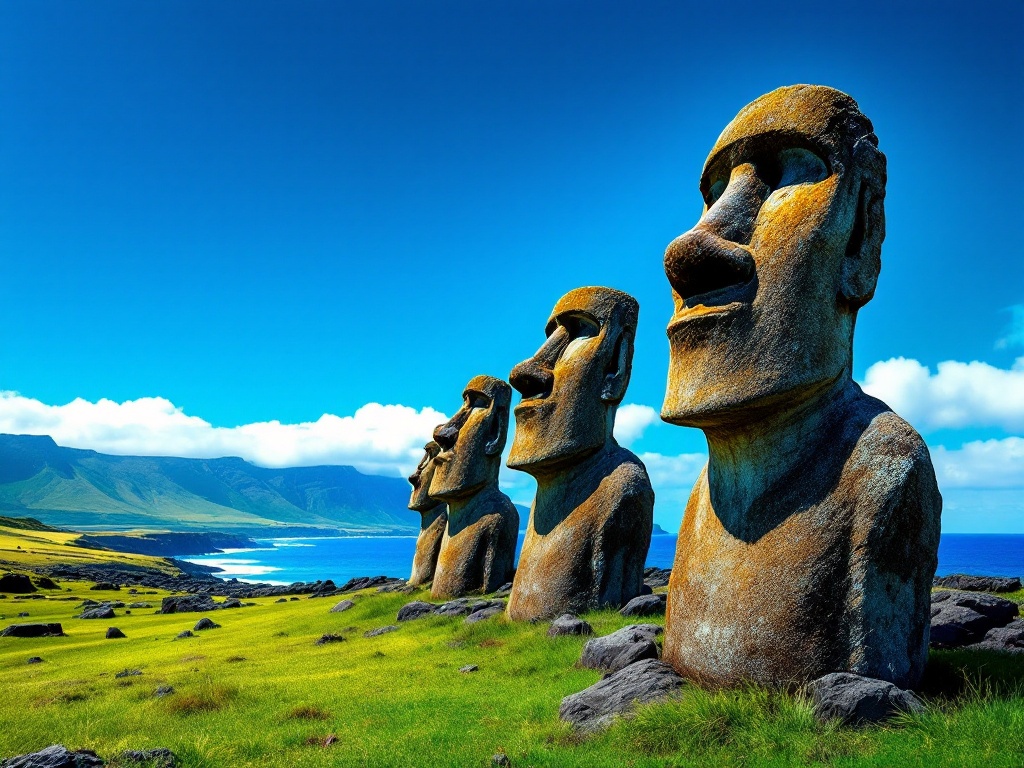
- Easter Island, a Chilean territory, is the most isolated inhabited island globally, famous for its moai statues.
- LATAM Airlines offers direct flights from Santiago (SCL) to Easter Island’s Mataveri International Airport (IPC). Book in advance as flights fill quickly.
- A National Park Pass (around $80 USD for non-Chilean adults) is required to visit most archaeological sites. It’s valid for ten days.
- Accommodation ranges from hostels to luxury hotels; plan to spend between $1,500 and $5,000+ per person for a week, including flights, accommodation, food, and activities.
- Hiring a local guide ($50-$150/day) enhances the experience by providing cultural insights and logistical support.
Easter Island Travel: Introduction and Overview
Easter Island, or Rapa Nui, is a remote Pacific Ocean island renowned for its iconic moai statues. It is home to roughly 7,000 people and this culturally rich destination attracts numerous tourists, despite the considerable expense. A national park pass is required for many sites, adding to the already high cost due to the island’s remote location. Careful planning is essential for anyone hoping to experience this unique island.
What Makes Easter Island Unique?
Easter Island, famous for its iconic moai statues, is the most isolated inhabited island in the world. These imposing figures represent the island’s rich cultural heritage, which visitors can experience through vibrant traditional dances and exploration of fascinating archaeological sites.
Geographical Location and Remoteness
Easter Island, one of the world’s most isolated inhabited islands, is a Chilean territory in the southeastern Pacific Ocean. It lies 3,700 km west of continental Chile. Its closest inhabited neighbor is Pitcairn Island, just 2,200 km to the east. This extreme isolation has profoundly shaped both the island’s unique ecosystem and its distinct culture.
How to Get to Easter Island
Planning an Easter Island adventure? Catch a direct flight from Santiago, Chile (SCL) to Mataveri International Airport (IPC) on LATAM Airlines. The five-hour journey books up fast, so reserve your seat early.
Flights: From Santiago to Mataveri Airport
LATAM Airlines offers direct flights from Santiago to Easter Island’s Mataveri International Airport (IPC). The five-hour journey has multiple daily departures, increasing during peak season.
Sailing to Easter Island: An Alternative Route
Sea voyages to Easter Island present unique challenges. Regular ferries or passenger ships do not service the island, making sea travel infrequent. Options like private yachts or expedition cruises require extensive planning and a much higher cost than flying. While a sea adventure sounds romantic, it’s complex and expensive.
Entry Requirements and Visa Information
Citizens of the USA, EU, Canada, and Australia enjoy visa-free access to Easter Island, simply requiring a passport and return ticket. Other nationalities must obtain a visa from a Chilean consulate in advance. While Australians and Mexicans may encounter an entry fee upon arrival in Chile, all visitors need a national park pass to explore the island’s many fascinating sites.
What to Expect on Easter Island
Easter Island’s weather is characterized by strong winds year-round. Summer temperatures typically stay below 30°C, but humidity can make it feel warmer. Be prepared for possible summer rain. Winter nights can get quite chilly, dropping to around 10°C. Packing for varied weather conditions is essential; a light raincoat is highly recommended.
When visiting Easter Island, respecting local customs is crucial. Ask permission before taking photos of residents. Be mindful of sacred sites and traditions. Learning a few basic Rapa Nui phrases will greatly enrich your experience.
Exploring Easter Island on foot is generally safe due to its small size and easy navigation. However, be aware of strong winds and changeable weather. Essential items include reef-safe sunscreen, a hat, and insect repellent.
Climate and Best Time to Visit
Easter Island’s subtropical climate offers warmth and humidity. The ideal time to visit is December through March, enjoying warm, dry days perfect for exploration. February features the vibrant Tapati Rapa Nui festival. However, the island welcomes guests year-round. For smaller crowds and potential savings, consider visiting from May to August. Winter, spanning June through August, brings cooler temperatures, sometimes dipping into the 50s Fahrenheit, and occasional rain.
Local Customs and Cultural Etiquette
Respect the local customs and traditions of Rapa Nui. Always ask for permission before taking photos of people, and be considerate of sacred sites and traditional ceremonies. Learning some basic Rapa Nui phrases can greatly improve your interactions with the locals, showing your respect and appreciation.
Safety Precautions for Travelers
Stay safe during your travels. Always lock your hotel room to protect your belongings from theft. While exploring the island at night can be a unique experience, exercise caution. Violent crime against tourists is rare, but it’s important to be aware of natural hazards such as strong coastal currents. Remember to be respectful of local customs and traditions.
Exploring Easter Island
Explore Easter Island and uncover the mysteries of its archaeological wonders, found primarily within Rapa Nui National Park. A park pass is essential for entry, while guided tours provide invaluable context about the island’s captivating history and culture.
Explore Independently
Popular sites like Ahu Tongariki, Rano Raraku, and Orongo can be explored at your own pace, offering a personal journey of discovery.
Enhance Your Experience with Guided Tours
Guided tours significantly enrich your visit, providing deeper insights into iconic moai statues and the island’s unique landscape. They offer expert knowledge and a more immersive understanding of the sites.
Plan your Easter Island adventure and unearth its secrets.
Rapa Nui National Park: Entry Requirements
Planning a trip to Easter Island? You’ll need a National Park Pass to explore most of its fascinating archaeological sites. Valid for ten days, the pass allows multiple entries to the majority of sites, excluding Rano Raraku and Orongo, which have limited access. Purchase your pass online or at the central market in Hanga Roa. Non-Chilean adults pay approximately 80 USD, while children benefit from a discounted rate.
Top Archaeological Sites: Ahu Tongariki, Rano Raraku, Orongo
Ahu Tongariki is famous for its 15 restored moai, standing on Easter Island’s largest platform. The volcanic crater, Rano Raraku, is the source of the stone for these imposing figures. Orongo, a ceremonial village, hosted the unique Birdman competition.
Transportation and Getting Around
Exploring Hanga Roa, Easter Island’s main town, is easy due to its walkable size. For venturing further afield, several options exist. Renting a car, motorbike, or ATV offers flexibility. Taxis are readily available, while guided tours provide in-depth knowledge about the island. Bikes and horses present unique ways to discover more remote areas.
Navigating Hanga Roa and Beyond
Hanga Roa, Easter Island’s sole town, is easily walkable. Exploring on foot is a great option, but to reach more distant sites, renting a motorbike or an ATV offers an adventurous alternative.
Options: On Foot, Motorbike Rental, ATV Rental
Hanga Roa, Easter Island’s main hub, is easily explored on foot. To venture further afield and discover more remote locations, renting a motorbike or ATV offers unparalleled flexibility. This allows you to explore the island’s iconic moai statues and hidden beaches at your own leisure, enjoying the independence of self-guided travel.
Travel Tips and Expenses
Plan your Easter Island adventure effectively by understanding the local currency, the Chilean Peso (CLP). While credit cards are widely accepted in Hanga Roa, carrying cash is essential for smaller businesses and exploring areas outside the main town. ATMs are available but can be unreliable, so it’s best to be prepared.A week-long trip typically costs between $1,500 and $5,000+ per person. This includes flights, accommodation, meals, activities, and the $80 Rapa Nui National Park entrance fee. Accommodation options range from budget-friendly hostels to luxurious hotels, catering to various preferences. Daily meals typically cost between $20 and $50, depending on your dining choices.Enhance your experience by hiring a local guide for $50 to $150 per day. They offer invaluable insights into the island’s history, culture, moai, archaeological sites, and unique traditions, enriching your understanding of this captivating destination.
Currency: Using the Chilean Peso
While the official currency is the Chilean Peso (CLP), US dollars are widely accepted. Cash is preferred, particularly for smaller transactions.
ATMs are available in Hanga Roa, but having some Chilean Pesos upon arrival is recommended. Exchange rates vary, so check current rates before your trip. Be prepared for higher prices on Easter Island compared to mainland Chile.
Estimating Travel Expenses
Planning a trip to Easter Island? Here’s a cost breakdown to help you budget:
Flights
Roundtrip airfare typically ranges from $500 to $1200, depending on your origin and time of year.
Accommodation
Expect to pay anywhere from $50 to $300 per night, with options ranging from budget-friendly hostels to luxurious resorts.
Food
Daily food costs average $30 to $80. This can vary based on your dining choices, from casual local eateries to upscale restaurants.
Activities
Moai statue tours and excursions usually cost between $50 and $150 each, offering unique insights into the island’s history and culture.
Transportation
Renting a car provides flexibility and costs around $50 to $80 per day. Other options include taxis and public transport.
Hiring a Local Guide for Day Tours
Enhance your Easter Island experience with a local guide. Their knowledge will bring to life the island’s captivating history, culture, and traditions, revealing the deeper meaning of iconic sites like Ahu Tongariki, Rano Raraku, and Orongo. Discover fascinating stories and local perspectives you wouldn’t find on your own. Connect with the Rapa Nui community through your guide’s translation services. Enjoy a smoother trip with seamless transportation and logistics handled by your guide. Unlock the island’s true secrets with this invaluable resource.
Benefits of Hiring a Local Guide
- Expert insights into the island’s history, culture, and traditions.
- Deeper understanding of iconic sites like Ahu Tongariki, Rano Raraku, and Orongo.
- Access to fascinating stories and local perspectives.
Enhanced Travel Experience
- Seamless communication with the Rapa Nui community through translation services.
- Smooth and efficient trip with organized transportation and logistics.
- Unlocking the island’s true secrets with an invaluable local resource.

